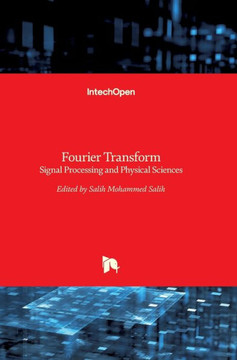
Grin Verlag
Digital Signal Processing using the Fast Fourier Transform (FFT)
Product Code:
9783638639149
ISBN13:
9783638639149
Condition:
New
$44.50
$42.94
Sale 4%

Digital Signal Processing using the Fast Fourier Transform (FFT)
$44.50
$42.94
Sale 4%
Seminar paper from the year 1997 in the subject Technology, grade: 1 (A), Loughborough University (Department of Aeronautical and Automotive Engineering), language: English, abstract: Conventionally a signal is a physical variable that changes with time and contains information. The signal may be represented in analogue (continuos) or discrete (digital) form. The majority of the physical variables of interest for the engineer are of analogue form. However digital data acquisition equipment favour a digital representation of the analogue signal. The digital representation of a analogue signal will effect the characteristic of the signal. Thus an understanding of the underlying principles involved in signal processing is essential in order to retain the basic information of the original signal. The primary goal to use the Discrete Fourier Transform (DFT) is to approximate the Fourier Transform of a continuous time signal. The DFT is discrete in time and frequency domain and has two important properties: - the DFT is periodic with the sampling frequency - the DFT is symmetric about the Nyquist frequency Due to the limitations of the DFT there are three possible phenomena that could result in errors between computed and desired transform. - Aliasing - Picket Fence Effect - Leakage The DFT of a signal uses only a finite record length of the signal. Thus the input signal for the DFT can be considered as the result of multiplying the signal with a window function. Multiplication in the time domain results in convolution in the frequency domain, which will influence the spectral characteristic of the sampled signal. In the table below rectangular and Hanning window are compared: [...] Table The Fast Fourier Transform (FFT) is a computationally efficient algorithm for evaluating the DFT of a signal. It is imported to appreciate the properties of the FFT if it is to be used effectively for the analysis of signals. In order to avoid aliasing
| Author: Albert H. Kaiser |
| Publisher: Grin Verlag |
| Publication Date: Dec 14, 2007 |
| Number of Pages: 88 pages |
| Binding: Paperback or Softback |
| ISBN-10: 3638639142 |
| ISBN-13: 9783638639149 |





